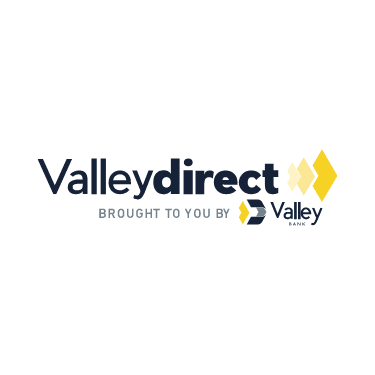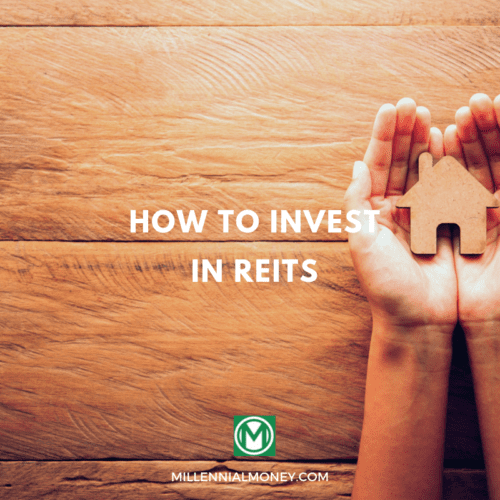If you are new to investing, it may not sound like enough to invest $500, but you’d be surprised how far it can go. Get started today and use long-term strategies to build wealth and grow your net worth even with smaller investment amounts.
While getting started might seem daunting, taking that first step is worth it, especially for the experience of managing an investment portfolio. In this article, I’ll show you how to effectively invest $500 and gain exposure to different types of investments, such as stocks, bonds, and mutual funds.
11 Smart Ways to Invest $500
Here are my recommended investment strategies you can start today, even with a minimum investment of $500:
- Pay Down Your Debt
- Invest with a Robo-Advisor
- Open a High-Yield Savings Account
- Invest in ETFs, Mutual Funds, or Index Funds
- Buy Fractional Shares of Stock
- Buy CDs
- Start a 529 Savings Account
- Invest in Real Estate and REITs
- Fund an IRA
- Look into Alternative Investments
- Start a Side Hustle
1. Pay Down Debt
You may be wondering how paying off your debt is related to investing. If you consider the interest rate you’re paying on what you owe, you’ll likely conclude that having debt is expensive! Paying off debts is an ideal move to get your personal finances in order before you start investing.
According to the Federal Reserve, at the end of 2022, the average APR for credit cards is 16.27%. Of course, having an APR of 25% or even 30% is not unheard of. Given these rates, paying off your debt may yield greater returns than investing, especially if the interest rate on your debt is higher than the potential return on investment.
Paying off credit card debt now will free up more money to invest later. It will also improve your credit score and relieve the stress of the burden of debt.
2. Invest with a Robo-Advisor
If you want someone else to efficiently manage your investment portfolio for you, a brokerage account with a robo-advisor may be the way to go, especially if you are a new investor.
A robo-advisor is a digital platform that builds your portfolio based on your financial goals, time horizon (how long you’re looking to invest), and risk tolerance (or the level of risk you are willing to take with your investments). Robo-advisors take on tasks that a financial advisor would otherwise handle, like managing your finances, offering financial advice, auto-balancing your portfolio, and assisting with goal setting.
Ideally, you should choose a full-service robo-advisor with zero or low fees, like Acorns. Whichever you choose, a robo-advisor account is worth considering, especially if you’re looking for a low-risk and high-reward investment.
3. Open a High-Yield Savings Account
Another way to invest your $500 is with a high-yield savings account, or an account that pays a higher interest rate (annual percentage yield or APY), than a traditional savings account. According to the Federal Deposit Insurance Corporation (FDIC), the national average APY for a traditional savings account is .24%, whereas with a high-yield savings account you could see an APY of 3.00% or higher.
Savings accounts are one of the safest investments for your money, as they are FDIC-insured, meaning your money is insured up to $250,000 (per depositor) should your bank or credit union go under.
Typically, high-yield savings accounts are offered through online banks, making it convenient for users to manage their account through a mobile app. Some even let you set up automatic transfers from your checking account, so you can easily continue saving after your initial $500 deposit.
4. Invest $500 in ETFs, Mutual Funds, or Index Funds
When building wealth, I always recommend diversification, meaning investing in various types of assets rather than putting all your money in one place. One way to do this is by investing in an exchange-traded fund (ETF), mutual fund, or index fund. Instead of utilizing one particular type of investment, your risk is spread out over multiple assets.
ETFs are a basket of securities traded on the stock market like individual stocks. They can be bought sold throughout the trading day. ETFs offer diversification across various industries and often have low expense ratios and fewer broker commissions. This is helpful for those who want to spread their risk to reduce potential volatility on their entire portfolio.
Other options to consider are mutual funds or index funds, which are both managed by professional brokers and can offer a good return on investment. Mutual funds invest in a constantly changing list of stocks, chosen by an investment manager, and aim to outperform a specific stock market index.
An index fund invests in assets that are part of a particular index, such as a collection of stocks, bonds, or other assets. The most common, the S&P 500 Index, contains 500 stocks from the largest companies in America with an average annual return of 10.31%. The goal of an index fund is to track and match the performance of a particular market index.
Overall, ETFs, mutual funds, and index funds are good options for conservative risk-takers who want to diversify their brokerage account.
5. Buy Fractional Shares of Stock
If you want to invest $500 in individual stocks, your resulting assets will likely be minimal. With large companies like Apple and Amazon that have high share prices, you may only be able to purchase 4-5 shares of stock with $500. However, there is the option to invest in fractional shares or a partial share of a company’s stock.
Many brokerage firms, like Robinhood and Charles Schwab, offer the ability to buy fractional shares through their own platforms or partnerships with other companies. In addition to affordability, fractional shares allow you to diversify your portfolio while investing in the companies you feel most aligned with.
Like any other investor, if you buy fractional shares of a dividend stock, you would receive a payment based on the amount of shares you own. However, fractional shares may not be available for all stocks and may be subject to certain fees or restrictions. Be sure to thoroughly research the brokerages and stocks you are interested in before making any moves.
6. Buy Certificates of Deposit (CDs)
A certificate of deposit (CD) is a type of savings account that requires you to deposit money for a fixed term. During this time, your money is earning interest, however, it cannot be withdrawn until the CD fully matures.
CDs are considered safe investments because they offer a guaranteed return on your investment, and are insured by the Federal Deposit Insurance Corporation (FDIC) or the National Credit Union Administration (NCUA) up to $250,000 per depositor.
Keep in mind that interest rates on CDs are usually a bit higher than on savings accounts, but there are other investments that may offer higher return rates. However, CDs are an option worth considering as long as you don’t mind having your money tied up for a fixed period of time.
7. Start a 529 College Savings Plan
If you’re a parent looking to prepare your child for college costs, a 529 college savings plan might be a good place to start. A 529 college savings plan is an investment account that allows parents to save for their children’s higher education expenses, such as tuition, fees, and room and board.
Funds from a 529 can be used at most accredited colleges and universities in the United States, and in some cases can also be used to fund study abroad programs (with some restrictions).
A great benefit to a 529 plan is that your money grows tax-free as long as it is used for qualified education expenses. This means you don’t have to pay taxes on any capital gains or dividends earned through the plan. Some states offer tax benefits or credits for contributions to a 529 plan, so it’s worth checking to see if your state has any special incentives.
8. Invest $500 in Real Estate and REITs
Investing in real estate investment trusts (REITs) is a great way to diversify your portfolio, even with just a small amount of money to invest.
REITs own or finance income-generating real estate properties and are designed to provide investors with a portfolio of real estate assets, such as commercial properties, residential properties, medical buildings, and retail locations. The money invested is used to purchase these properties that generate income from rent or interest. By law, REITs are required to pay 90% of their total annual profits to investors as dividends.
Another option is real estate crowdfunding, in which your funds are pooled together with others to help real estate investors purchase or develop a property. Through this process, investors can invest in real estate without owning, financing, or managing properties themselves.
We recommend investing with Fundrise, as there is a $10 minimum “Starter” investment option and a low 1% annual account management fee.
9. Fund an IRA
If you are not currently contributing to a retirement account, now is a great time to start. You may already have a 401(k) plan through your employer and both parties are contributing, so keep it going—it’s essentially free money from your job and a tax-free contribution from you.
If you don’t have a 401(k) plan, an individual retirement account (IRA) is a good alternative, as it has similar benefits. There are two types of IRA investments—a traditional IRA and a Roth IRA.
With a traditional IRA, you can make pre-tax contributions and get a tax break in the current tax year. However, there is a 10% penalty on early withdrawals (or those made before turning 59 ½), with some exceptions. Additionally, you will have to pay income taxes on your funds, whenever you withdraw them from your account.
Alternatively, Roth IRAs allow you to contribute money after taxes, which allows you to withdraw your earnings tax-free during retirement.
With either investment account, you can manage the investments yourself or seek the help of a robo-advisor or financial advisor to assist with investment decisions. In addition to stocks and mutual funds, retirement accounts can include investments in peer-to-peer lending platforms.
10. Look into Alternative Investments
Alternative investment strategies have been recently growing in popularity. These asset classes aren’t stocks, bonds, or cash, and cannot be easily converted into cash. A few of the most common types of alternative investments include:
- Real Estate
- Fine Art
- Cryptocurrencies (or crypto)
- Collectibles
- Commodities
- Jewelry
- Wine
- Precious Metals
- Hedge Funds
Including these types of investments helps diversify your portfolio. While some view alternative investments as a greater risk, if you have assets unaffected by the movement of the stock market, you reduce the risk of volatile stocks affecting your overall portfolio.
If you’re considering one of these alternative assets, always choose an investment that makes sense to you in terms of the product or service offered and the potential risk involved.
11. Start a Side Hustle
Why not turn your passion project into a business? Using $500 to start a side hustle is a great way to dip your toes into entrepreneurship while investing in yourself. You can test out your business idea without risking too much financially and discover if there is potential to build it into a sustainable business that eventually pays for itself.
Additionally, taking on a side hustle is a beneficial learning experience. You’ll have the chance to network and build connections in your field while gaining resources that can be used to support your future business ventures.
Like investing, starting a side hustle carries some risks, including the possibility of a failing business and losing your investment. On the other hand, it also has the potential to bring in additional income and even turn into a full-time business.
Should You Invest $500?
Although $500 may seem like a small amount of money to start investing, it can add up over time. It can also be intimidating to get started, especially given the potential risk involved; however, taking that first step is the most important part. Once you are fluent in investing, you can continue adding funds to your investments and watch your capital gains continue to grow.
Further, it will be crucial for you to consider your risk tolerance level, investment timeline, and financial goals. While financial advisors can provide guidance, your financial situation is unique to you—choose what aligns with your goals and comfort level.
Pros and Cons
It’s important to weigh the potential pros and cons of investing $500, which depend heavily on your investment goals, risk tolerance, and current financial situation. Here are a few things to keep in mind before taking the plunge:
Pros
- For new investors, it’s best to start learning about it with a smaller amount of money.
- If you have a long-term investment timeline, even a small amount of money has the potential to grow over time through compound interest and appreciation (or value).
- If you are opposed to more significant risks, starting small means you have less to lose.
Cons
- Investing always comes with a degree of risk—you could lose $500 more quickly than you hoped.
- Starting small means your potential gains will be smaller, as well.
- Significant gains take time, so if you’re looking for a quick return on your investment, it’s unlikely.
Frequently Asked Questions
What should I do before I start investing?
Before you make your first investment, you’ll want to get your personal finances in order, such as creating an emergency fund with three to six months of living expenses and paying down your high-interest debt (mainly credit cards).
Additionally, you should determine your risk tolerance (i.e. are you an aggressive, moderate, or conservative investor?), and time horizon (or how long you plan to hold an asset before you sell it). Finally, decide your short-term and long-term financial goals, which will guide you in your investments.
Is it better to invest or build an emergency fund?
An emergency fund is money set aside to cover unexpected expenses or as a cushion if you encounter financial hardship. Financial advisors typically recommend that you have three to six months of your living expenses in your emergency fund.
This way, if you face unexpected circumstances, like job loss or a medical emergency, you’ll be covered. If you decide to build up your emergency fund before investing, keep it somewhere safe, like a money market or savings account.
Is it better to invest or save money?
Whether you save or invest is a decision you will have to make based on your goals and risk tolerance. Do you prefer holding cash, or earning potential profits on it?
While investing comes with risk, it also has the potential to produce much higher returns than a savings account. However, if you are saving for a short-term goal, you might be better off leaving the money in a savings account.
Is It Really Worth It to Invest $500?
Instead of spending extra cash on a coffee or magazine, you could set it aside to invest in your future self. You can start saving for short-term and long-term goals, which could allow you to achieve financial freedom quicker than you think.
Even an initial investment of $500 has the potential to grow significantly over time, with options including the stock market, real estate, retirement accounts, savings accounts, and more. While investing comes with a degree of risk, once your money starts to grow, you can begin diversifying your portfolio—or investing in several different assets to spread out the risk and potentially increase your chances of success.






No comments yet. Add your own